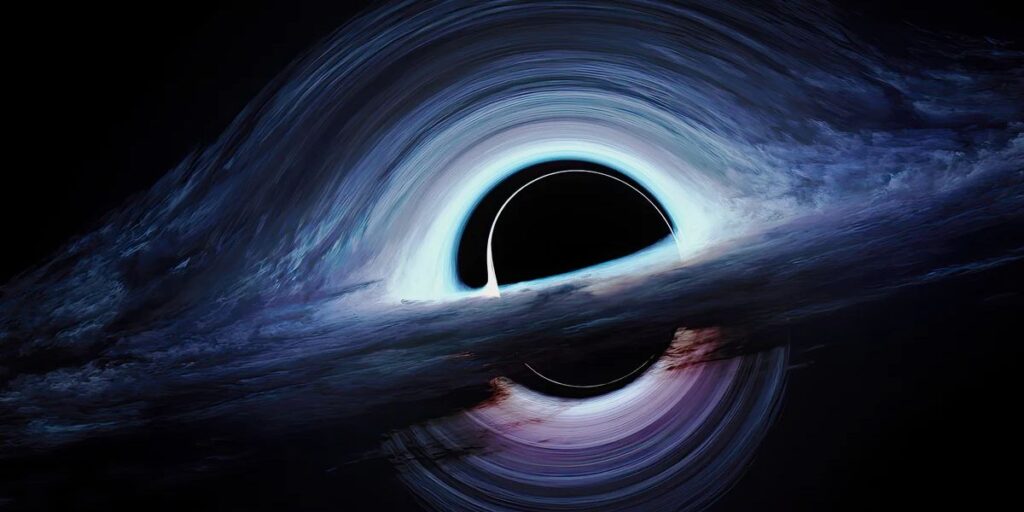The universe is an awe-inspiring place, filled with planets, stars, and galaxies that stretch across vast distances. Yet, despite our impressive understanding of the cosmos, there remains a monumental mystery lurking in the darkness: dark matter. This elusive substance makes up about 27% of the universe, but its true nature has evaded scientists for decades. Though we cannot see or touch it, the mystery of dark matter plays a crucial role in shaping the structure of galaxies and the universe as a whole.
What Is Dark Matter?
To understand the enigma of dark matter, it’s important to grasp what it is—and what it isn’t. Dark matter does not emit, absorb, or reflect light, making it invisible to traditional observational tools like telescopes. Unlike ordinary matter, which is composed of atoms and makes up everything we see around us (planets, stars, and even ourselves), dark matter is not made of baryons (protons and neutrons). This means that it doesn’t interact with electromagnetic forces, the forces responsible for electricity and magnetism, or the light that we observe.
If dark matter doesn’t emit light, how do we even know it’s there? The answer lies in its gravitational effects. Observations of galaxies and galaxy clusters suggest that there’s far more mass present than what we can account for with visible matter alone. The gravitational pull exerted by dark matter explains why galaxies rotate faster than they should based on the mass of their visible stars. Without dark matter, galaxies would fly apart at their speed.
The Search for Dark Matter
Since the 1930s, scientists have been aware of the discrepancy between the visible mass of galaxies and the gravitational forces holding them together. Swiss astrophysicist Fritz Zwicky was one of the first to propose the existence of unseen matter in galaxy clusters, which he referred to as “dunkle Materie” or dark matter. His groundbreaking research hinted that galaxies were surrounded by a halo of mysterious, invisible mass.
Fast forward to modern times, and the pursuit of dark matter has become a top priority for physicists and astronomers. One of the key tools in this search is cosmic mapping—observing the large-scale structure of the universe. Galaxy clusters, cosmic microwave background radiation, and gravitational lensing (where light from distant galaxies is bent by the gravity of unseen matter) all provide indirect evidence for dark matter.
What Could Dark Matter Be Made Of?
One of the most pressing questions about dark matter is its composition. While the search for dark matter continues, several theories have emerged to explain what it might be made of. Among the leading candidates are Weakly Interacting Massive Particles (WIMPs). These hypothetical particles interact only via gravity and the weak nuclear force, making them difficult to detect directly. Theoretical physicists have suggested that if WIMPs exist, they could be detected through rare collisions with ordinary matter.
Another potential candidate is axions, ultra-light particles that could form a dense, unseen halo around galaxies. Unlike WIMPs, axions would have much less mass, but they would still exert gravitational influence on galactic structures.
Yet, despite countless experiments designed to detect WIMPs, axions, or other potential dark matter particles, none have definitively succeeded. Experiments like the Large Hadron Collider (LHC) and specialized detectors located deep underground continue to search for evidence, but the mystery endures.
The Role of Dark Matter in the Universe
Even though we don’t yet know what dark matter is, we do know its effects. Dark matter’s gravitational pull is crucial for the formation of galaxies and the universe’s structure. Shortly after the Big Bang, the universe was a hot, dense soup of particles. As it expanded and cooled, regions of higher density—where dark matter was more concentrated—began to collapse under gravity. These dense regions acted as seeds for galaxy formation.
Without dark matter, the universe might look drastically different. Simulations suggest that, without the gravitational framework provided by dark matter. Galaxies would have struggled to form, and stars might be scattered more loosely across space. The familiar structures of spirals and clusters would not exist as we see them today.
Dark matter’s influence is so strong that it can even bend light. This phenomenon, called gravitational lensing, allows astronomers to “see” dark matter indirectly by studying the way light from distant galaxies is warped by its gravitational pull. Some of the most detailed maps of dark matter come from studying these cosmic distortions.
What Lies Ahead?
Despite decades of research, dark matter remains one of the greatest mysteries in modern science. Physicists continue to search for it, whether by analyzing cosmic phenomena, building more sensitive detectors, or probing the fundamental nature of particles. Each discovery brings us a step closer to understanding the true nature of dark matter. But for now, it remains one of the most tantalizing riddles in the universe.
The search for dark matter is not just about solving a cosmic puzzle; it’s about understanding the very foundations of reality. If scientists can unlock the secrets of dark matter. They may open the door to a new realm of physics that goes beyond the Standard Model. The framework that currently explains the behavior of known particles and forces.




